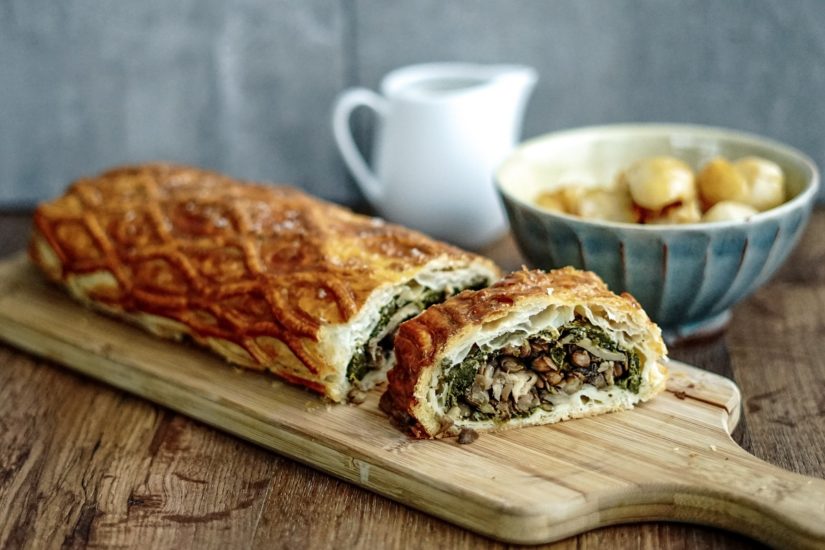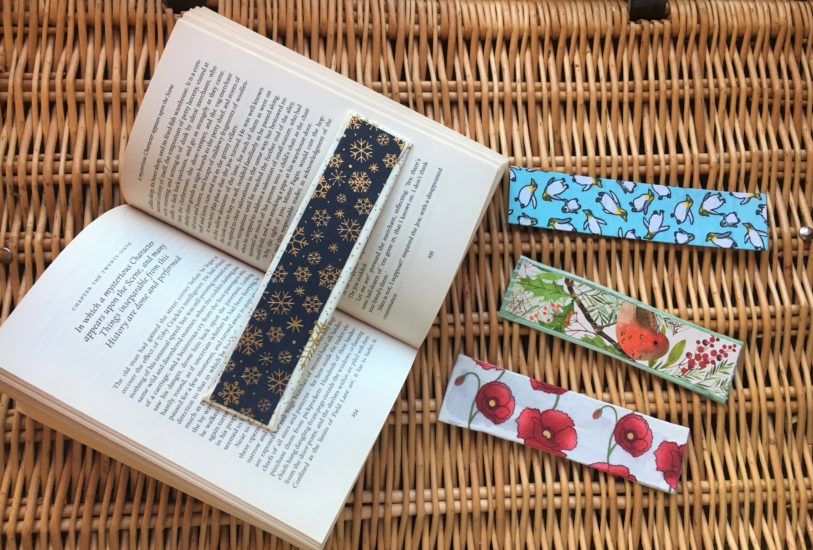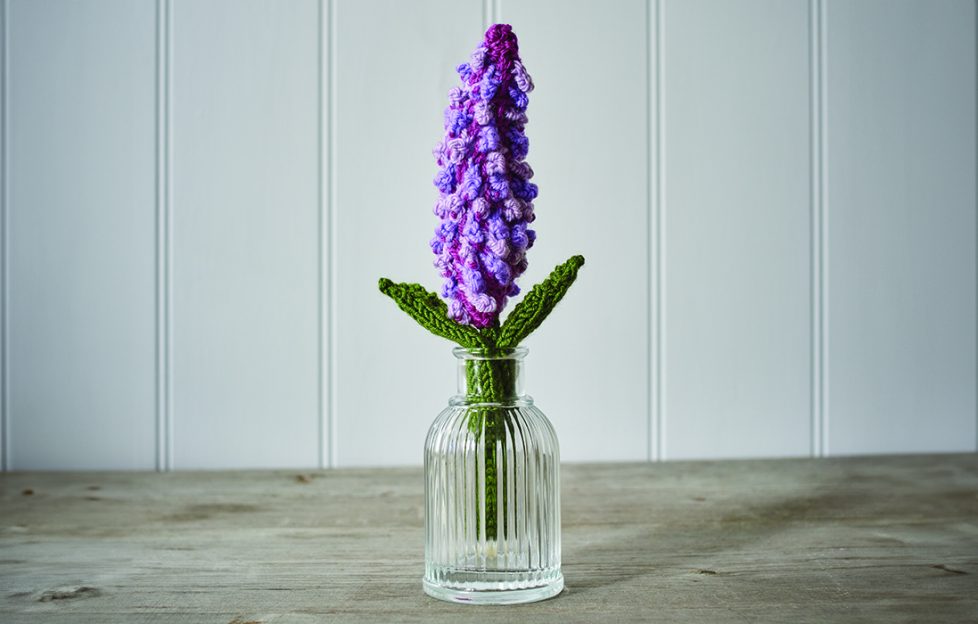
The purple Lilac flower symbolises spirituality, purity and innocence and you can work it now using this free knitting pattern from the book “Knitted Flowers” by Sian Brown. Simply add it to a vase for a contemporary decoration for your home.
Lilac (Lilac Syringa vulgaris) is a species of woody plants in the olive family, native to woodland and scrubland. The pale purple colour is the most recognizable, but lilac can also be white, pink, yellow or burgundy.
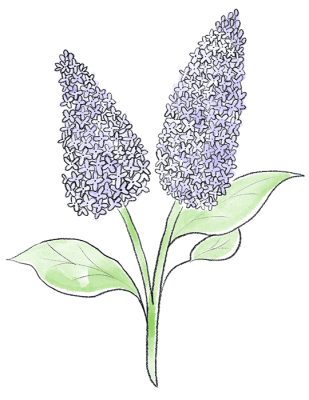
Illustration from the book “Knitted Flowers” from Gifts to Me, GMC Publications
Free knitting pattern of flower: measurements of lilac bloom
7¾in (20cm) long
Flower: 4¾in (12cm) long
You will need:
- Small amounts of DK yarn in light mauve (A), lilac (B), damson (C) and dark green (D)
- Pair of 3.75mm (UK9:US5) knitting needles
- Pair of 3.75mm (UK9:US5) double-pointed needles
- Tapestry needle
- Pins
- Toy stuffing
- Florist’s wire
Knitting tip:
The flower is knitted in a textured bobble pattern, using three colours, to mimic the real-life flowers found on the bloom.
How to make the knitted lilac flower:
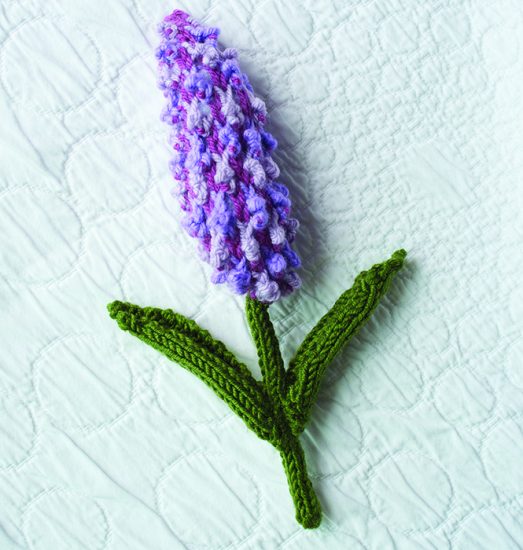
Close up of knitted lilac flower from the book “Knitted Flowers”, GMC Publications
Stitch pattern (uneven number of sts)
Row 1: K1 A, * work 1 flake in B as folls: work (k1, yo, pass k st over yo and return rem st to left-hand needle) 3 times, leaving last yo st on right-hand needle, k1 A; rep from * to end.
Row 2: Using A, p.
Row 3: Using C, work 1 flake as before, *k1 A, work 1 flake in C; rep from * to end.
Row 4: Using A, p.
Rep these 4 rows.
To make the flower:
Using C, cast on 10 sts, leaving a length of yarn.
St st 2 rows, starting with a k row.
Inc and work the stitch pattern as folls:
Row 1: K1, m1, work patt to last st, m1, k1 (12 sts).
Row 2: P1, m1p, work patt to last st, m1p, p1 (14 sts).
Row 3: K1, m1, patt to last st, m1, k1 (16 sts).
Row 4: P1, m1p, patt to last st, m1p, p1 (18 sts).
Row 5: K1, m1, patt to last st, m1, k1 (20 sts).
Work without shaping for 2 rows.
Dec.
Row 8: K2tog, patt to last 2 sts, k2tog (18 sts).
Row 9 and every alt row: P.
Row 10: K2tog, patt to last 2 sts, k2tog (16 sts).
Row 12: K2tog, patt to last 2 sts, k2tog (14 sts).
Row 14: K2tog, patt to last 2 sts, k2tog (12 sts).
Row 16: K2tog, patt to last 2 sts, k2tog (10 sts).
Row 18: K2tog, patt to last 2 sts, k2tog (8 sts).
Row 20: K2tog, patt to last 2 sts, k2tog (6 sts).
Using C, st st 2 rows.
Cast off rem sts.
To make leaves (make 2):
Using D and 3.75mm needles, cast on 3 sts.
Row 1: P.
Row 2: K1, m1, k1, m1, k1 (5 sts).
Row 3: K1, p to last st, k1.
Row 4: K1, m1, k to last st, m1, k1 (7 sts).
Row 5: K1, p to last st, k1.
Row 6: K1, m1, k to last st, m1, k1 (9 sts).
St st 11 rows, keeping k1 at the end of each p row.
Row 18: K2tog, k to last 2 sts, k2tog (7 sts).
Row 19: K1, p to last st, k1.
Row 20: K2tog, k3, k2tog (5 sts).
Row 21: K1, p3, k1.
Row 22: K2tog, k1, k2tog (3 sts).
Row 23: K1, p1, k1.
Row 24: Sl 1, k2tog, psso.
Fasten off rem st.
To make the stem:
Using D and 3.75 dpns, cast on 4 sts, leaving a length of yarn.
Work an i-cord to 4¾in (12cm).
Cast off.
To make up knitted lilac flower:
Sew in the ends of the main piece and the cast-off edges of the leaves. Block and press the leaves.
Pin the seam of the flower and sew up using C, starting at the cast-off edge and sewing close to the first flakes, stuffing lightly as you sew. Leave an opening at the cast-on edge.
Attach the leaves to the stem, and sew a little way up the sides of the leaf. Use the yarn at the top of the i-cord to thread through the base of the flower, push the i-cord a little way in and secure the base of the flower to the stem. Insert the wire into the stem and push up into the flower. Secure the cast-on edge of the stem.
Reader Offer: “Knitted Flowers” Book
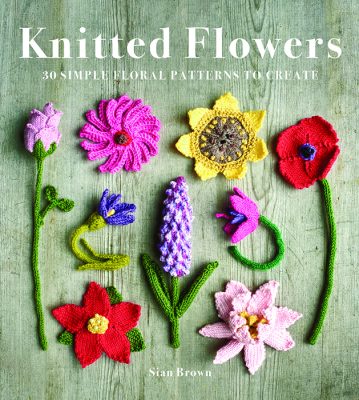
“Knitted Flowers” by Sian Brown, GMC Publications, RRP £14.99, available online and from all good bookshops.
You can buy “Knitted Flowers” by Sian Brown from Gifts to Me for only £12 (+P&P)! Usual RRP £14.99.
Visit giftstome.co.uk and use the offer code R5675.
Offer ends January 29, 2025.
(Available to UK customers only)



